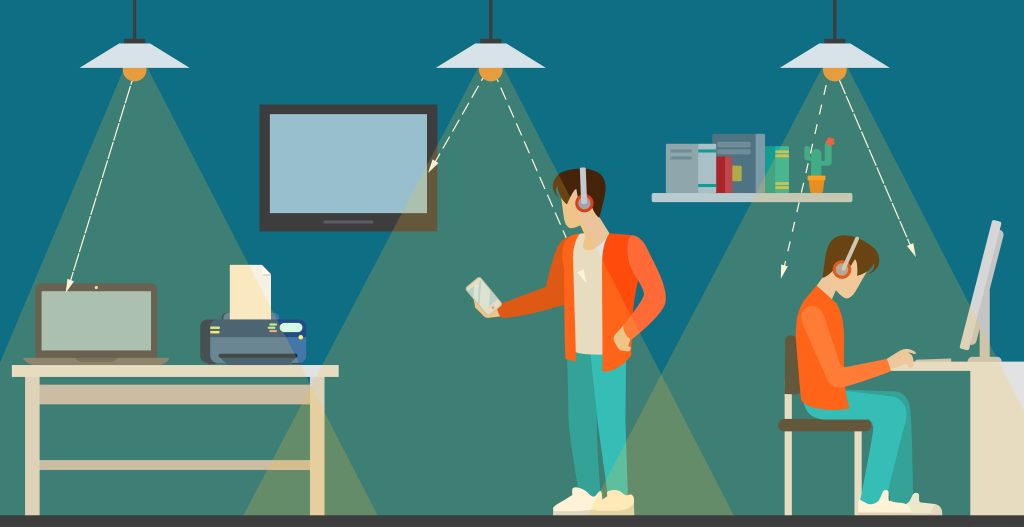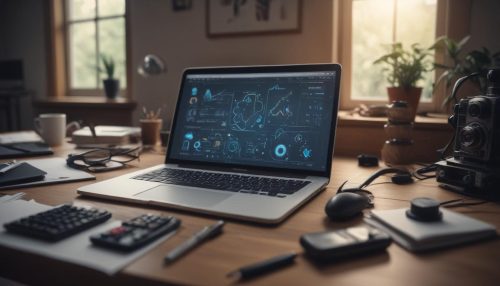The Link Between Focus and Workspace Lighting
Brian Taylor July 10, 2025
In this article, we explore the link between focus and workspace lighting, how different types of lighting influence productivity, and how you can design your workspace to enhance focus through lighting choices. With the rise of remote work, understanding the impact of lighting on cognitive function has never been more important.
When it comes to creating an optimal workspace, most people focus on furniture, layout, or digital tools. However, one often overlooked element plays a crucial role in productivity and focus: lighting. The connection between workspace lighting and focus is not just a matter of aesthetic preference—it has a profound impact on how we work, how effectively we perform, and even how we feel while working.

The Science Behind Lighting and Focus
1. Light and Circadian Rhythms
Our bodies have a natural internal clock known as the circadian rhythm, which regulates sleep, alertness, and cognitive functions. One of the primary external factors that influence this rhythm is light exposure. Natural light, in particular, helps regulate our circadian rhythms, making us feel more awake during the day and promoting restful sleep at night.
Research by Harvard Medical School reveals that exposure to bright light during the day improves alertness and cognitive function, especially in the morning hours. In contrast, inadequate lighting—especially in the form of harsh fluorescent lights or dim, dimly lit spaces—can disrupt this balance, leading to fatigue, reduced attention, and poor concentration.
2. The Effect of Blue Light
Blue light, which is emitted by the sun as well as most LED lighting, is a powerful stimulator of our wakefulness. In fact, Harvard Health Publishing highlights the role of blue light in enhancing alertness, making it an essential element in your workspace lighting design.
Blue light also helps the brain release serotonin, a neurotransmitter that plays a key role in mood regulation and focus. However, excessive exposure to blue light during the evening, particularly from screens, can interfere with sleep quality by disrupting melatonin production. Therefore, finding the right balance of blue light in the workspace is crucial to maintaining both productivity and sleep hygiene.
Types of Lighting and Their Impact on Focus
1. Natural Light: The Ultimate Focus Booster
Whenever possible, natural light should be the primary source of lighting in your workspace. Studies consistently show that workers exposed to natural light are more productive, experience less eye strain, and feel happier in their environments. Natural light has a positive effect on concentration and mood, helping you stay alert and engaged throughout the day.
A study conducted by Human Spaces found that employees who work in environments with access to natural light report 15% higher productivity than those who work in windowless spaces. If you have a window in your workspace, position your desk near it to take advantage of this natural light.
2. Warm vs. Cool Lighting: Which Is Better for Focus?
While natural light is the best choice, artificial lighting is often necessary. When it comes to selecting the right type of artificial lighting, understanding the difference between warm and cool lighting is key.
- Warm Lighting: Warm light (yellow or orange tones) creates a cozy, relaxed atmosphere. It is often used in living rooms or bedrooms but is not ideal for high-focus tasks. Warm lighting may make you feel relaxed but can lead to drowsiness, making it less effective for intense work sessions.
- Cool Lighting: Cool light (blue or white tones) simulates daylight and is known to enhance focus and alertness. According to research by The Journal of Environmental Psychology, cool light has been shown to improve concentration and productivity, making it the ideal choice for workspaces.
For a workspace that fosters focus and productivity, cool or neutral lighting is optimal. If your workspace doesn’t have access to enough natural light, consider using daylight-spectrum bulbs that mimic natural light to stimulate your circadian rhythm and keep you alert.
3. Task Lighting: Precision for Focused Work
In addition to ambient lighting, task lighting is essential for focused work. Task lighting, such as desk lamps, provides direct illumination for specific activities like reading, writing, or using a computer. Task lighting should be adjustable so you can direct the light precisely where you need it.
Research from the Lighting Research Center highlights that effective task lighting can improve concentration and reduce eye strain, which is particularly important for activities requiring close focus. Desk lamps with adjustable brightness and color temperature are excellent choices for tasks that demand high concentration, like reading, writing, or coding.
Practical Tips for Designing Your Workspace Lighting
Now that we’ve explored the science behind lighting and its impact on focus, here are some practical tips for optimizing your workspace lighting:
1. Maximize Natural Light
If possible, position your desk near a window to take advantage of natural light. If your workspace is lacking windows or natural light, consider adding light therapy lamps, which mimic the effect of sunlight and can help boost mood and focus. A light box with 10,000 lux is often recommended for people who work in windowless environments or experience seasonal affective disorder (SAD).
2. Use Layered Lighting
A combination of ambient, task, and accent lighting can create an ideal lighting setup in your workspace. Use bright, cool lighting overhead for general illumination, and add task lighting (such as a desk lamp) for focused work. Accent lighting, such as decorative lights, can help improve the ambiance and reduce eye strain from harsh overhead lights.
3. Adjust Light Color and Intensity
If you have adjustable lighting, experiment with different colors and intensities to find what works best for you. During the day, opt for cooler, brighter light to enhance focus, while using warmer, softer light in the evening to signal to your body that it’s time to wind down.
4. Consider Light Placement
The placement of your lights can make a big difference in how you feel and work. Avoid placing your light sources directly behind you, as this can cause glare and strain. Instead, place lights at an angle, so they illuminate your workspace without causing discomfort. For task lighting, ensure that the light falls directly on your work area, without casting shadows or straining your eyes.
The Psychological Benefits of Proper Lighting
Lighting affects more than just your cognitive function—it also has psychological impacts. Proper lighting can create a sense of calm and control in your workspace, reducing stress and enhancing focus. A study from The Journal of Environmental Psychology found that workers in well-lit environments report feeling more in control, leading to a better overall experience in the workplace.
Lighting that fosters focus and productivity can also improve job satisfaction, as it helps workers feel more energized and positive about their tasks. When the lighting supports mental clarity, employees are more likely to engage fully with their work, leading to improved outcomes.
Conclusion
The link between focus and workspace lighting is clear—your lighting choices significantly impact your ability to concentrate, work efficiently, and stay mentally clear. By maximizing natural light, selecting the right artificial lighting, and implementing proper lighting strategies in your workspace, you can enhance your productivity and well-being.
With the right lighting, you’ll create an environment that supports deep work, reduces distractions, and helps you stay focused for longer periods of time. Whether you’re working from home or in an office, taking the time to optimize your workspace lighting can have a profound effect on both your productivity and mental clarity.
References:
- Rizzo, A. (2017). The Influence of Lighting on Cognitive Performance: A Study on Attention and Memory. Journal of Environmental Psychology. https://www.journals.elsevier.com
- Dijkstra, K., & Kaal, E. (2018). Lighting in Work Environments and Its Effects on Work Performance. Building and Environment Journal. https://www.journals.elsevier.com
- Kuller, R., & Lindsten, J. (2016). Lighting and Mental Performance: Evidence for the Impact of Light on Focus and Cognitive Function. Lighting Research & Technology Journal. https://journals.sagepub.com





